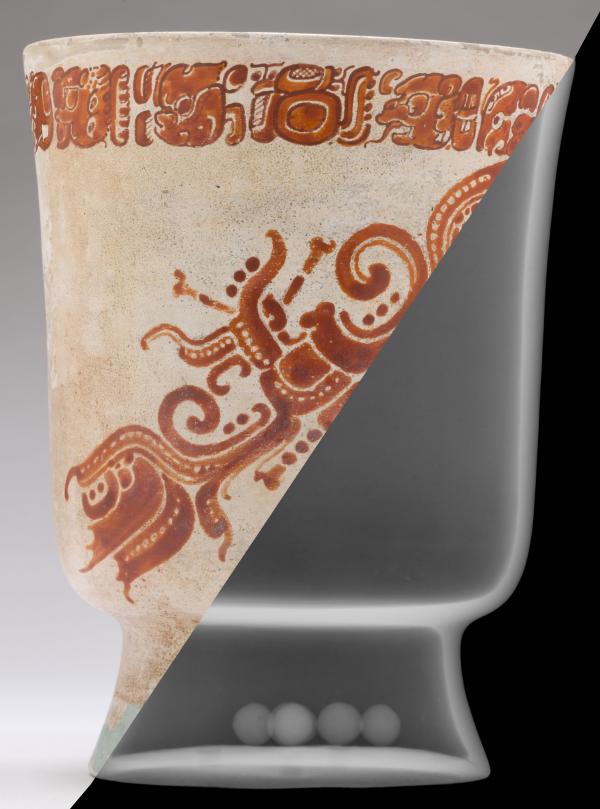In 2015, LACMA’s Program in the Art of the Ancient Americas embarked on the Maya Vase Research Project, a fruitful collaboration with the museum's Conservation Center to conduct technical analysis of ancient Maya ceramic vessels. For this research, we are interested in reconstructing how ancient Maya potters and painters made these vessels. We have thus been looking at clay recipes, vessel construction and firing, and painting with slips (clays and minerals suspended in water), stucco, and post-fire pigments.
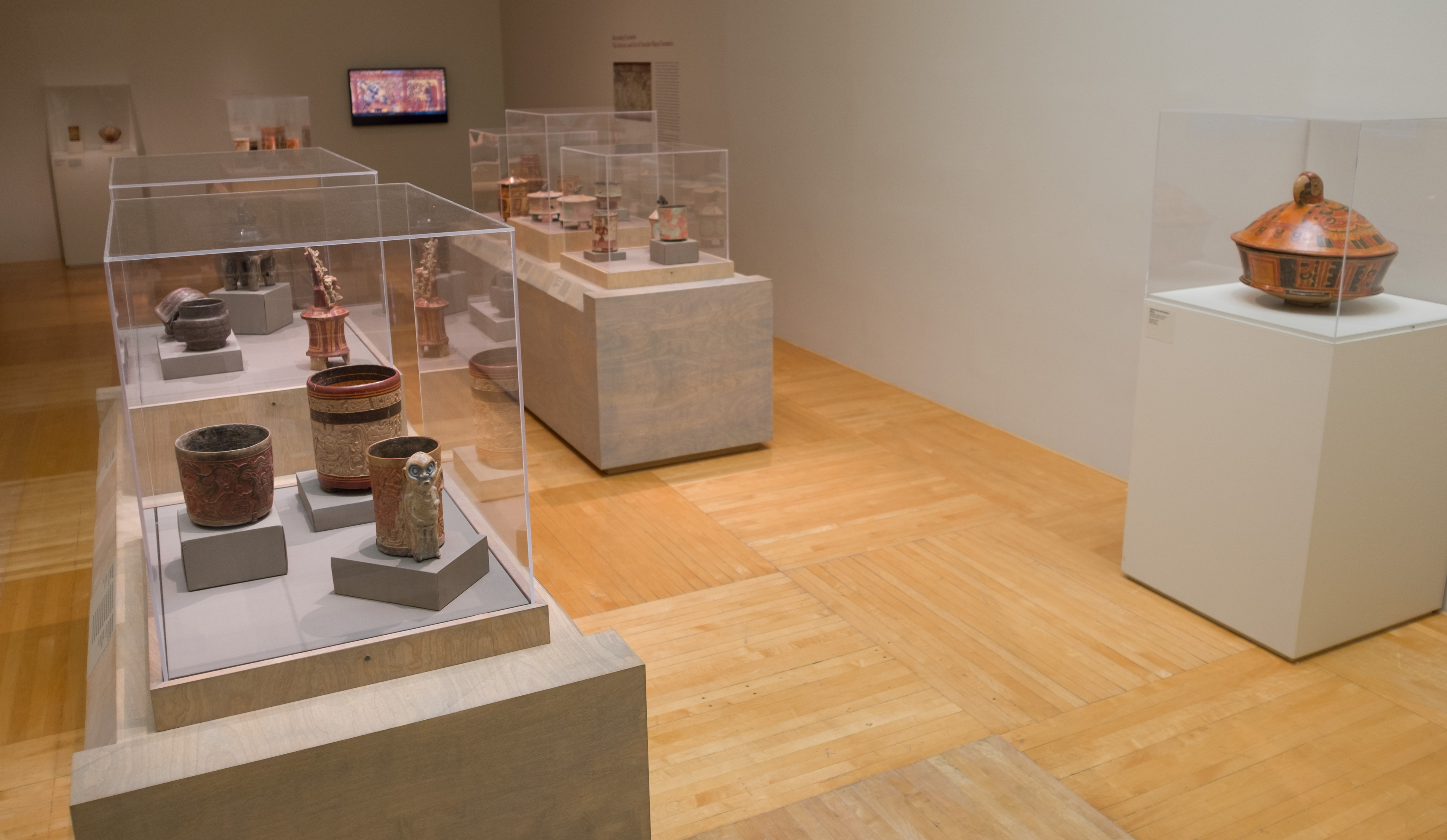
To make this research available to LACMA audiences, I curated an exhibition, Revealing Creation: The Science and Art of Ancient Maya Ceramics, which highlights our research and features the objects under study (and others too!). For this exhibition, I wanted to balance what we were learning through Western science with indigenous Maya knowledge, technologies, religion, and languages. The exhibition opened at LACMA on May 21, 2016, and will be on display until June 4, 2017.
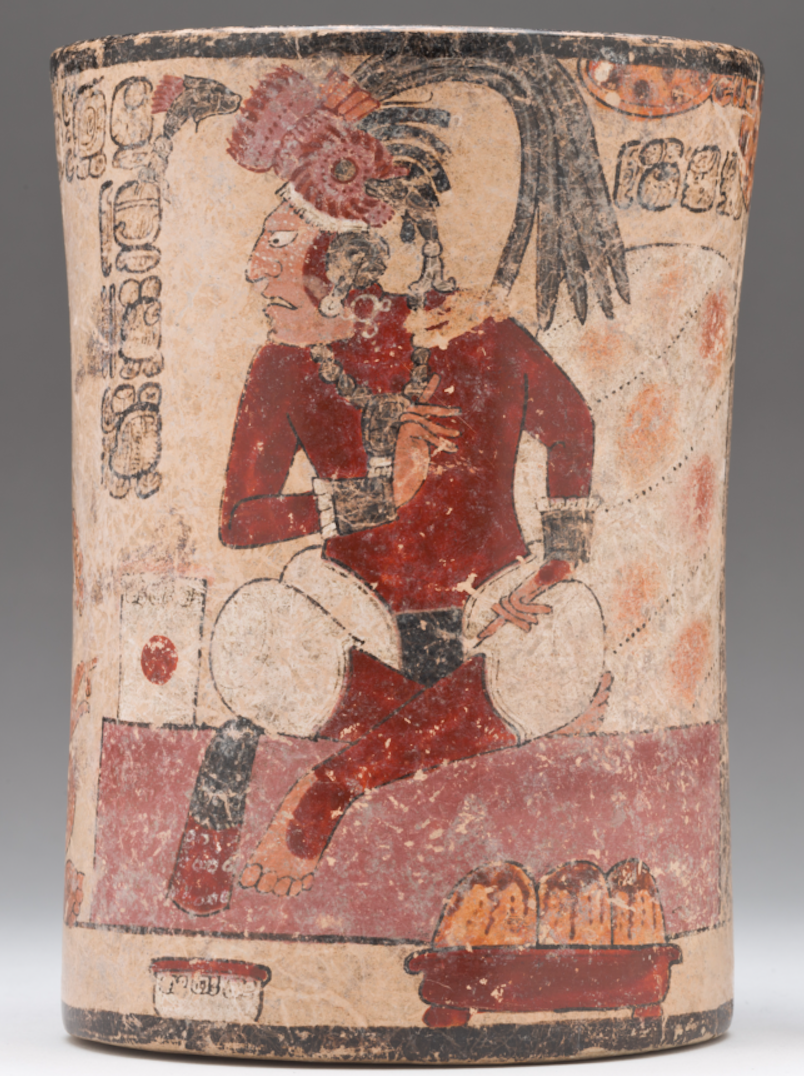
We chose 15 Maya vessels to study in the Maya Vase Research Project. We intentionally limited the number of objects so that we could focus intensively on each. We selected vessels from broad chronological and geographical ranges and diverse ceramic techniques, to see where this research would lead. The vessels are all from the Maya civilization, from Mexico and Guatemala, dated to c. 400–900 AD. These vessels came to LACMA in 2010 from a private collection and have been well known for many years as images, which were published in Justin Kerr’s Maya Vase Books or mayavase.com and used extensively by scholars studying their painted and carved images and inscriptions. Now that the vessels are at LACMA, we want them to be known as objects whose materiality is thoroughly studied and appreciated. We also want to make them known to a wider general public, both local and international.
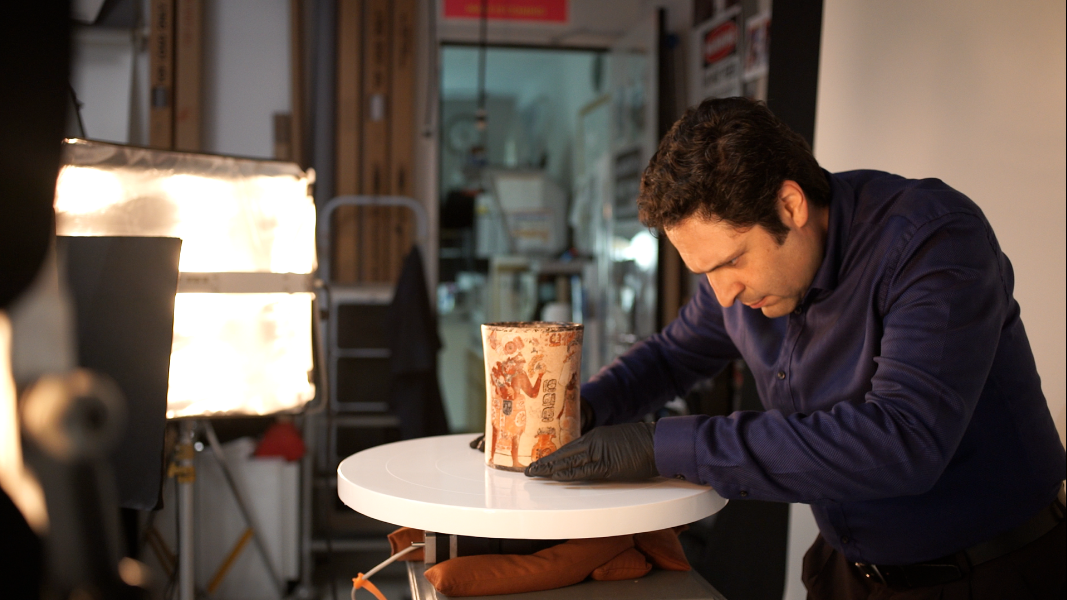
The first step of our research was the technical imaging of the vessels, conducted by LACMA’s conservation photographer, Yosi Pozeilov. This started with regular visible photography in the round, and then Yosi photographed the objects under ultraviolet illumination (365 nm). Yosi also used a specially designed turntable to make new digital rollouts of each vessel in visible light and in the infrared range of the spectrum. The turntable controls the rate of rotation of the vessel during the acquisition of the images.
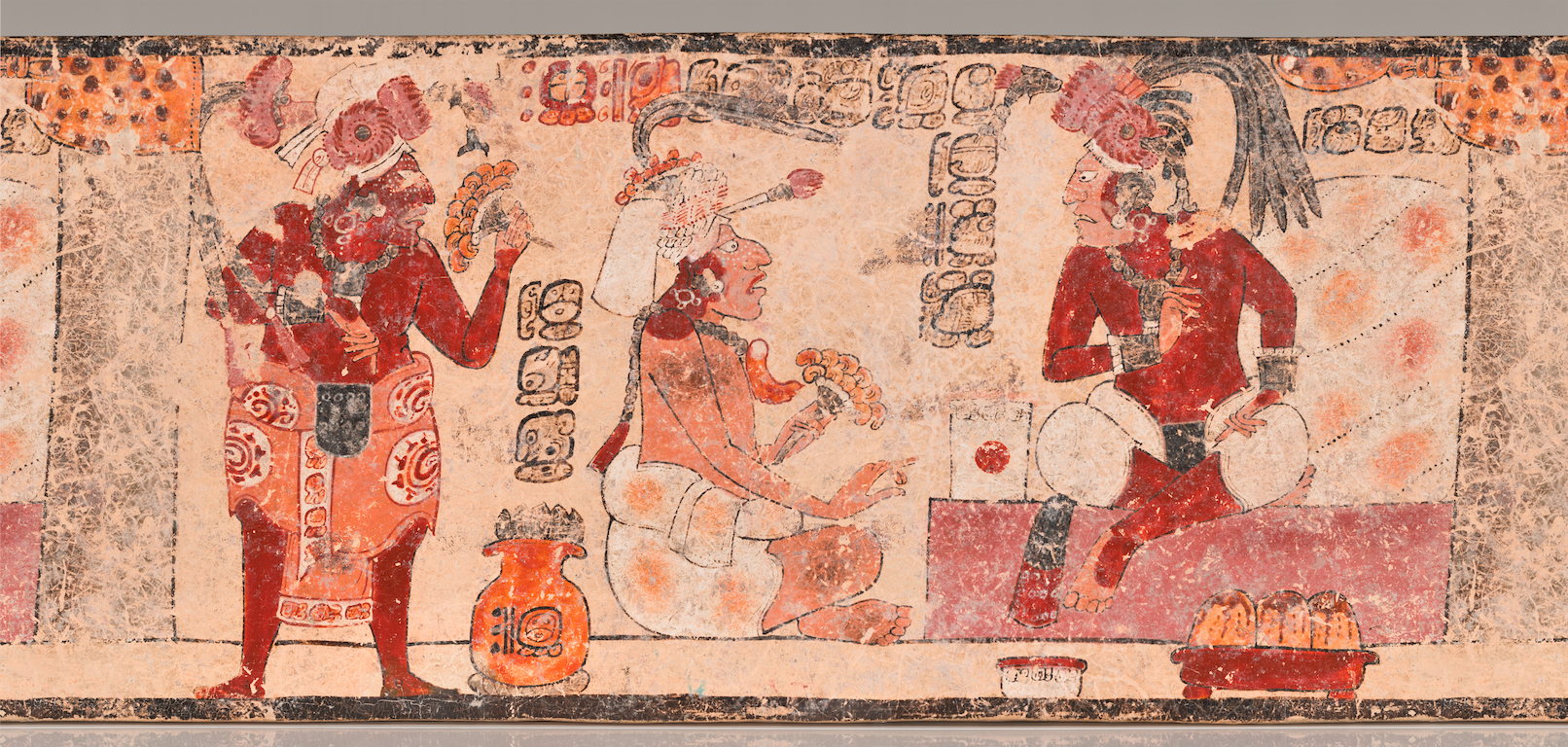
These vessels have intricately painted scenes wrapped around the exterior of the vessels’ cylindrical shapes. A “rollout photograph” rolls out that painted image so that it can be seen in one glance. Photographer Justin Kerr had pioneered rollout photography for Maya vases in the 1970s, but the film he used is no longer available. New technologies allow Yosi to create digital rollouts, and these can be modified digitally to frame the image or inscriptions in different ways.
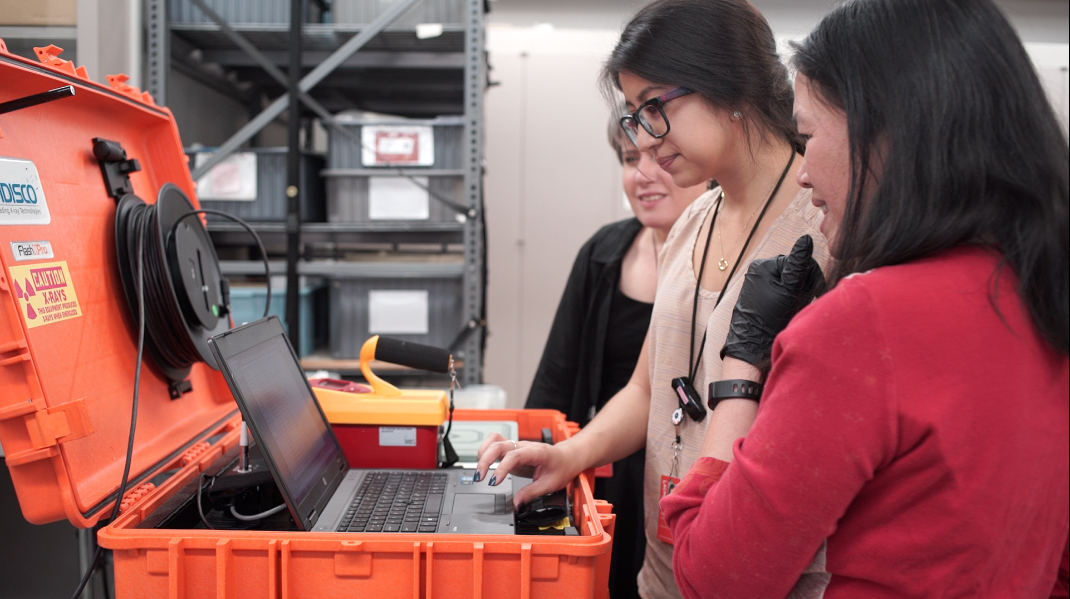
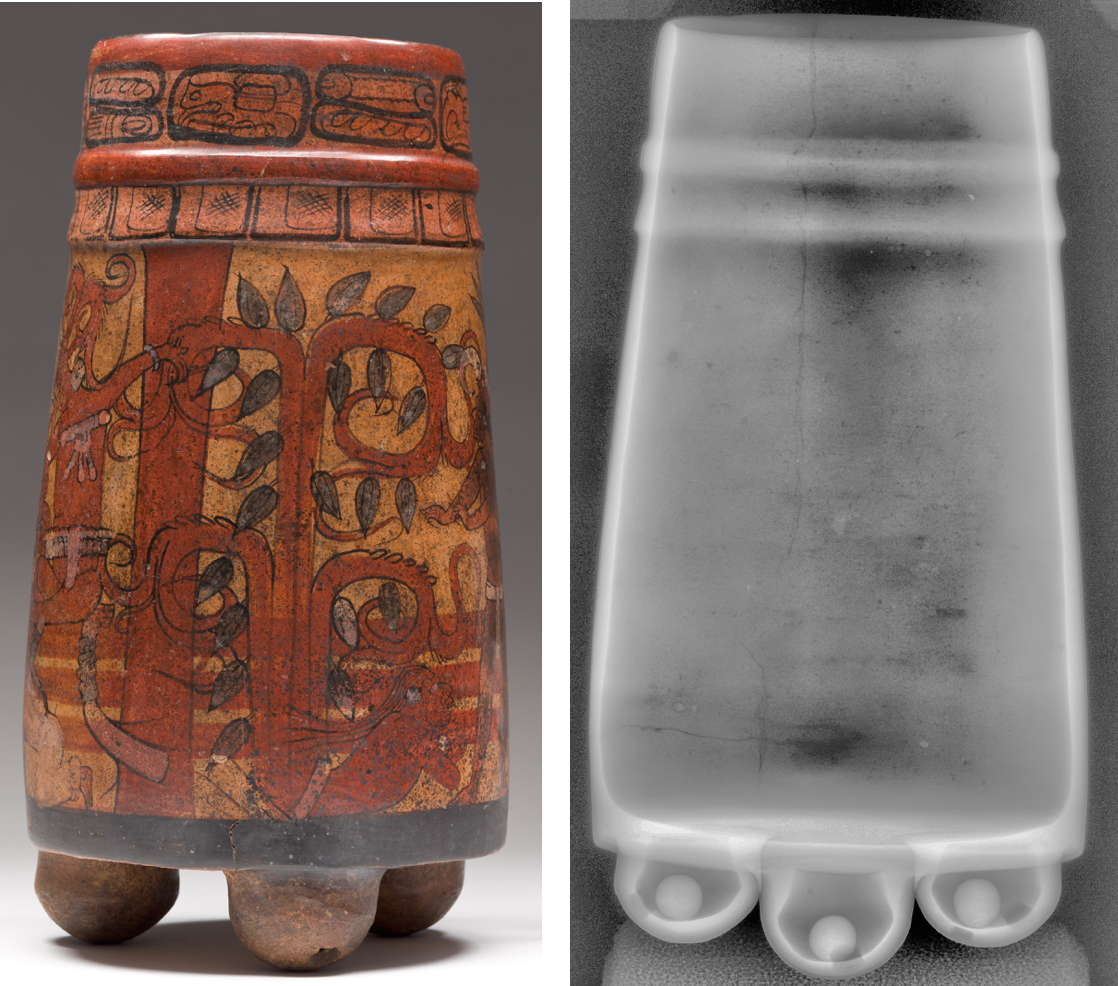
Next, conservation scientist Charlotte Eng, chemical hygiene officer Allison Akbaroff, and Yosi used a digital X-ray system to take X-ray radiographs of the vessels. The radiographs are manipulated in image processing programs and allow us to study physical composition and properties of the vessels without the need to physically sample them. Senior objects conservator John Hirx is especially adept at reading these, not only because of his experience as a conservator but also because he is a potter. We also used digital microscopy, which can aid in studying ancient painting techniques and layering and in determining condition.
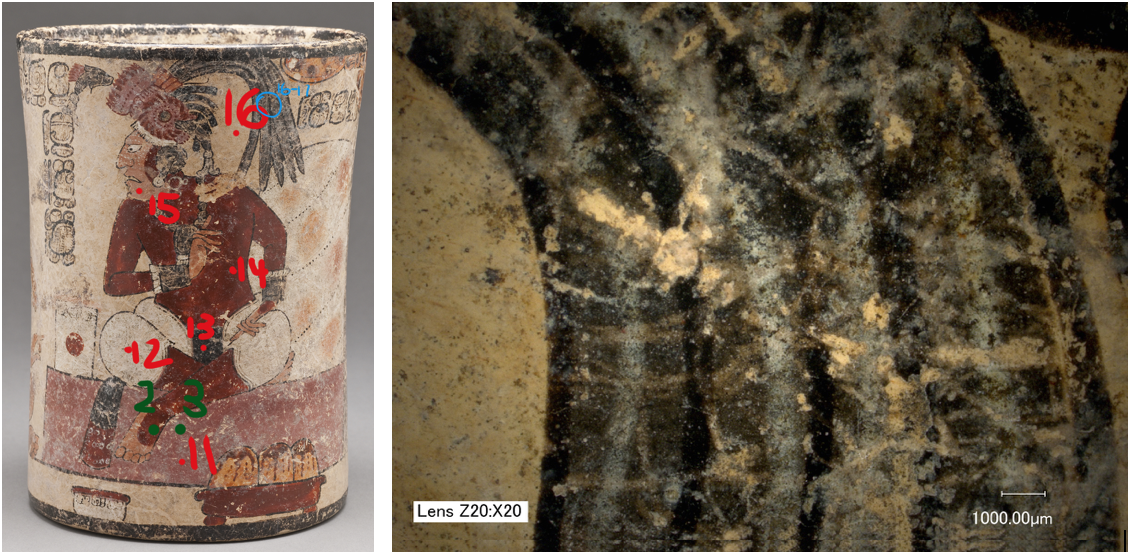
Together, conservators and curators examined the resulting images to seek information about pigments, techniques, and areas of restoration, and to identify areas for additional testing. Charlotte then investigated the chemical composition of the vessels and their painted decorations using portable X-ray fluorescence (pXRF), which is well suited for identifying inorganic components used in the body, slips, and post-fired paint. Charlotte and Mellon Conservation Fellow Laura Maccarelli also used other analytical tools to learn more about the pigments the ancient artists used. Frank Preusser, senior conservation scientist, and Diana Magaloni Kerpel, deputy director and director of the Program in the Art of the Ancient Americas, provided invaluable insights in this aspect of the research.
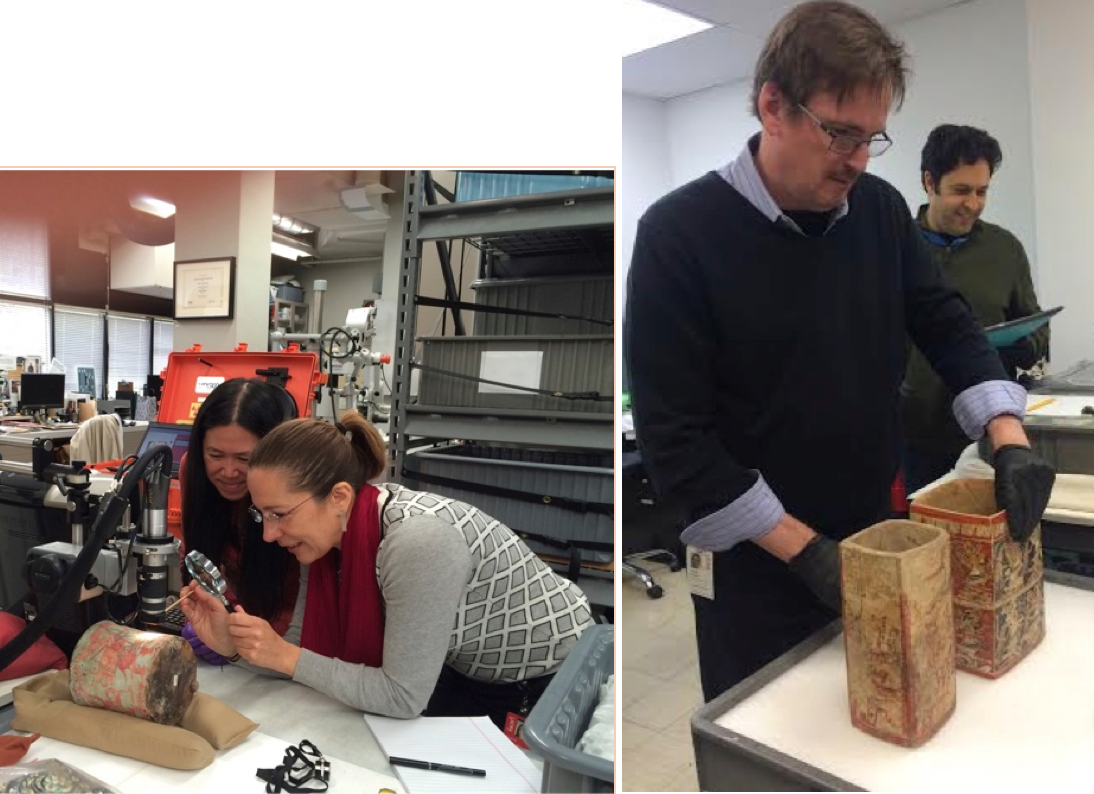
We used these various types of imaging and tools in conjunction with intense visual study—both with the naked eye and microscopy—of the vessels. Through our choice of objects, and as the project has progressed, we have focused on three main areas: ceramic manufacturing techniques, decoration techniques, and modifications after creation. Our multi-disciplinary project integrates the sciences and humanities, including art history, iconography, and epigraphy, and comparisons with archaeologically excavated vessels. We also are learning from ethnohistory and ethnography regarding indigenous American ceramic manufacturing techniques, and we want to learn more from contemporary potters.
Each project member brings distinct knowledge and tools to the table, and the gathering, questioning, and intense collaborative looking have brought forth new insights. It has been both exciting and fun. According to John, “As potters are working, they often obliterate what they have done. One has to be careful about how one interprets the trail.” Our approach is thus both collaborative and iterative, and we return again and again to direct analysis of the objects in comparison with digital imagery and other analytic tools.
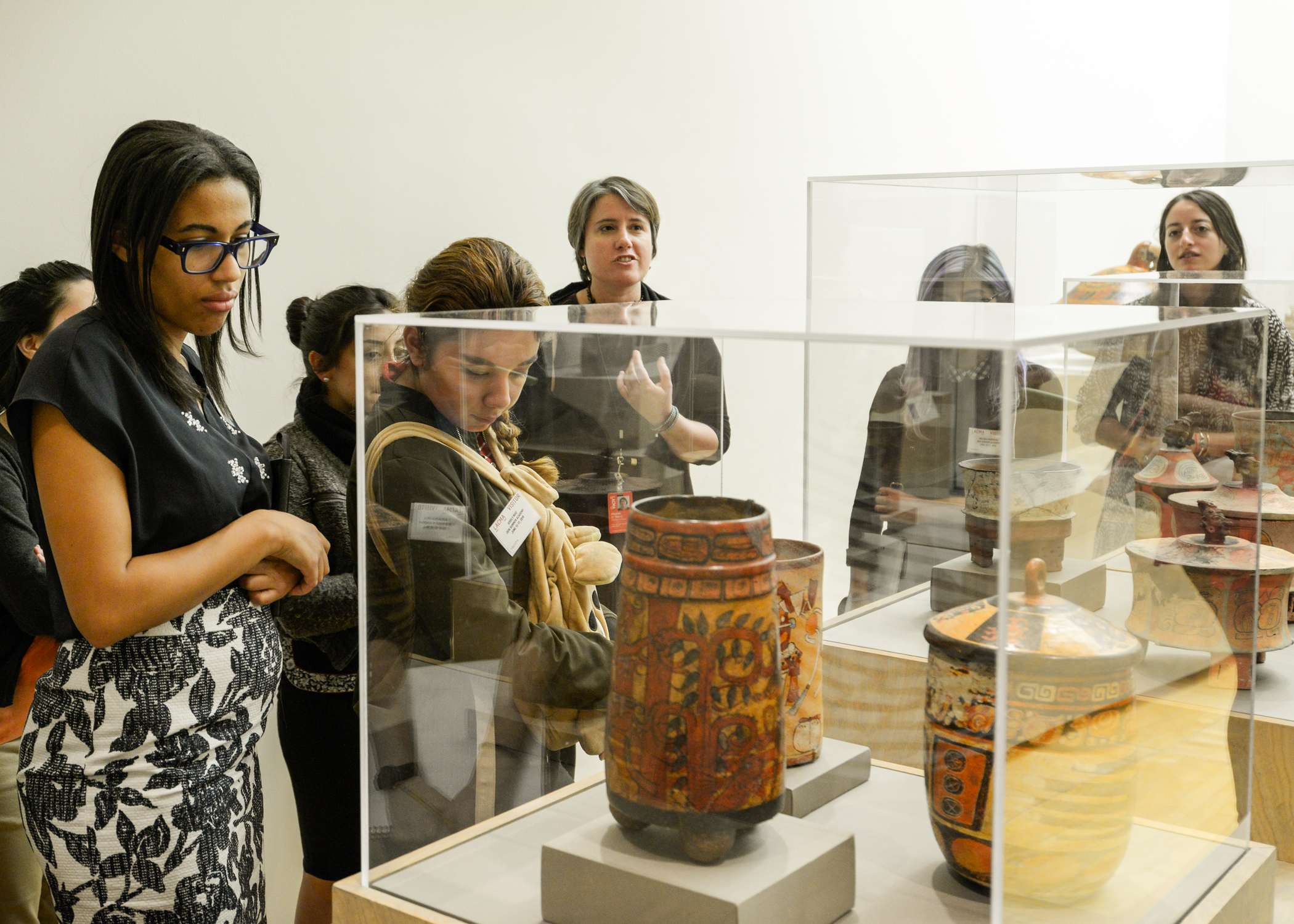
Revealing Creation features the vessels in our study and some of the research results, but we are still in the process of discovery and will continue to meet and seek additional insight as we move forward with formal publications. We hope LACMA audiences will join us in this journey. Check out the website for LACMA’s Program in the Art of the Ancient Americas, where we will be adding more detailed information about our research. We also have a trove of new images (including rollout photographs) for you to dive into!
We are grateful to The Andrew W. Mellon Foundation, which is supporting our program as we build toward a future LACMA Center for the Study of the Art of the Ancient Americas.
Unframed will have more on the project and the exhibition throughout the year. Revealing Creation: The Science and Art of Ancient Maya Ceramics is on view in the Art of the Americas Building, Level 4, until June 4, 2017.



